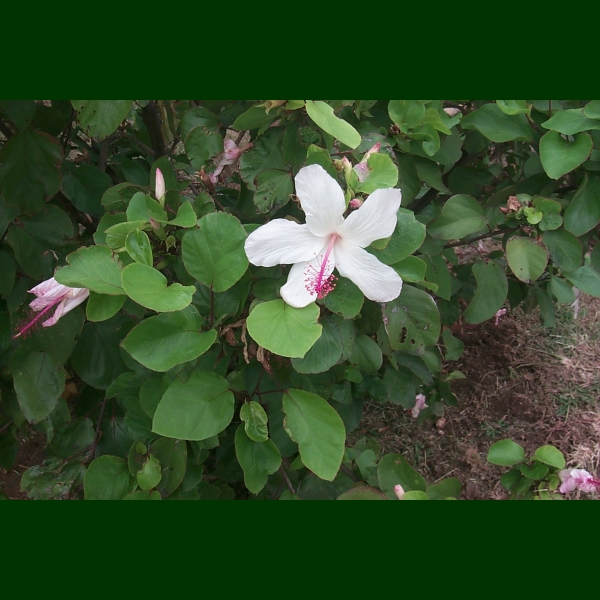 Hawaiian Name(s): koki‘o ke‘oke‘o, hau hele, koki‘o kea, pāmakani
Hawaiian Name(s): koki‘o ke‘oke‘o, hau hele, koki‘o kea, pāmakaniScientific Name: Hibiscus arnottianus
Vernacular Name: none
Family: Malvaceae
Status: endemic
Authority: A.Gray
Description: Shrubs/small trees, up to 8 m tall.
Habitat Most often occuring in mesic to wet forests between 300–800 m on O‘ahu and Moloka‘i (Wagner et al. 1990:882–883).
Medicines: The illnesses ‘ea and pa‘ao‘ao are treated with the flowers buds. The leaves are used as a purgative. For blood purification the flower buds are used in conjuction with the bark of the tap root, as well as the bark of the ‘ahakea (Bobea spp.), ‘ohi‘a ‘ai bark (Ipomoea pes-caprae), ‘uhaloa bark, (Waltheria indica), kikania (Desmodium sandwicense) plant (except pods), pohuehue roots (Ipomoea pes-caprae), hāpu‘u trunks (Cibotium spp.), ‘auko‘i stalks (Senna occidentalis), noni fuit (Morinda citrifolia), and kō honua‘ula (red sugarcane, Saccharum officinarum) (Chun 1994:157–158).
Non Medicinal Uses: "Many references" in songs and stories (Neal 1965:561), fiber for cordage (Bornhorst 1994:9)
Specific gravity of wood: unknown
Famous Locations:
Mele:
`Ōlelo Noeau:
Dye Color and Parts:
Kino lau:
Location on Bishop Museum Kalihi Campus:
Propagation Information: Easy. From cuttings, seeds, grafting & air layering; 4-6 inch tip/stem cuttings treat with medium strength rooting hormone, plant in perlite(&vermiculate) in pots/flats & place in mist system until roots develop, put in individual pots of peat moss & perlite with fertilizer (Bornhorst 1996:35–36; Bornhorst and Rauch 1994:8; Culliney and Koebele 1999:86–89; Nagata 1992).
Hawaiian Native Plant Propagation Database.
Native Plants Hawaii.
Seed: Seed length approximately 5 mm. Photograph: H.Lennstrom.

